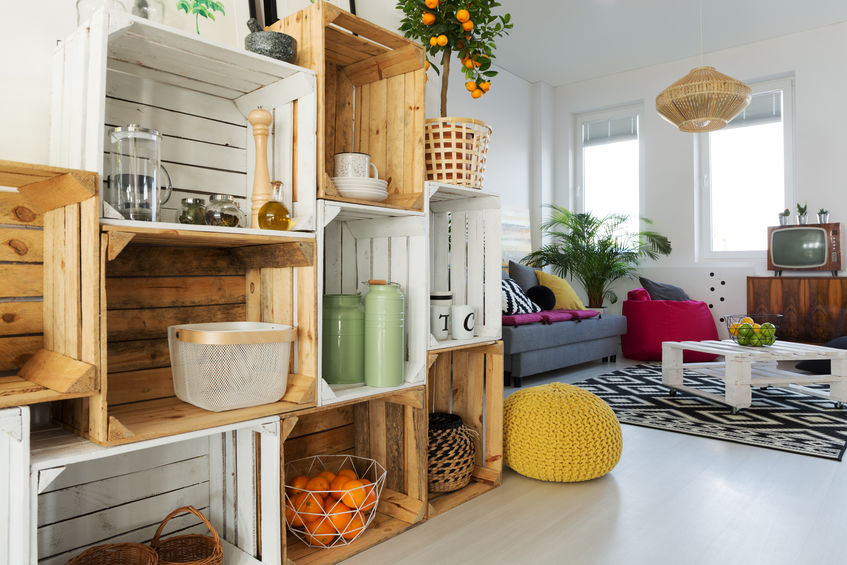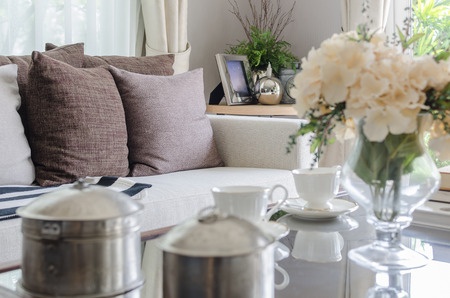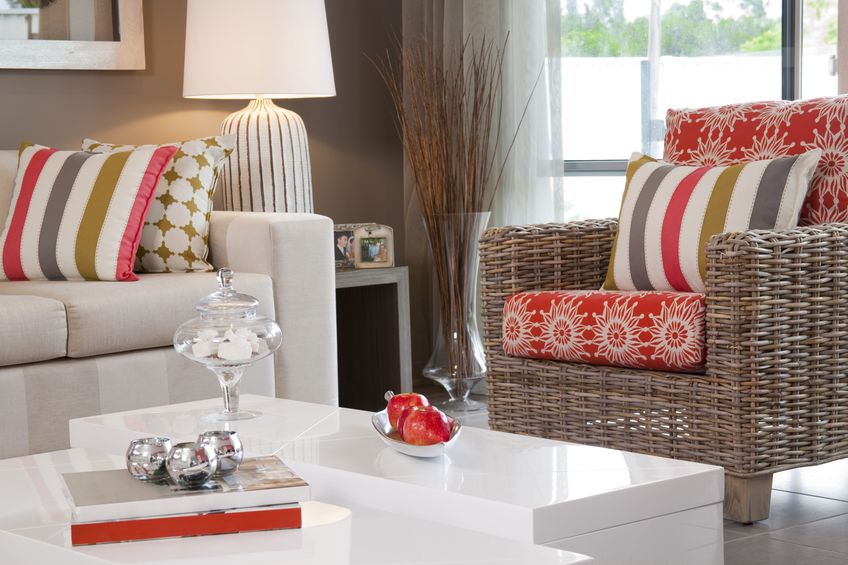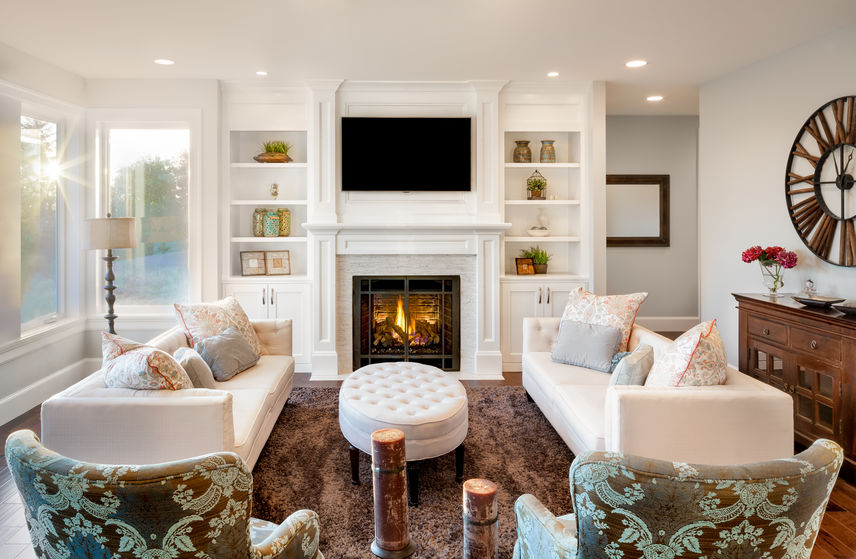- Clean Home
- Organize Your Home
- Clutter Free Living Room
Clutter Free Living Room
Can you have a clutter free living room? Yes, it is possible, although this busy living presents a unique set of organizational and decorating challenges.
The sofa, chair, end table, and coffee table are all substantial, yet none offer any storage space. Where do you put the remote? Magazines? Newspapers? Paperwork? Headsets, etc.?
You get the drift. Most families carry the stuff they need or are working on into the living room and then leave it there (of course!). This is precisely what you don't want.
Here are easy yet efficient ways to create more storage for a clutter free living room.
How to Create a Clutter Free Living Room
Making order out of apparent chaos can involve little more than moving a few things around and adding a few well-chosen storage items.
The goal is to create a clutter-free living room where family members and guests feel comfortable.
Start retooling this family hub by taking a good look around the room. Are your shelves too jam-packed to do justice to the photos, book collections, and family heirlooms that vie for space there?
If so, begin by stripping the shelves bare of all objects. After a good dusting, put things back in a balanced assortment of large and small items to make the overall look and feel clutter free.
Place books you rarely read on the shelf nearest the floor and a grouping of smaller, lighter items on the next shelf up.
Display items you'd like at center stage on chest-high shelves, and place the remaining items higher up, alternating between bulky pieces and delicate objects.
Look high and low for the objects that strayed from other rooms and are haphazardly set atop the coffee table or end tables. Return them to their rightful homes, or move them into storage.
Next, if your couch, chairs, and other furnishings are flush against the wall, move them to the center of the room in seating clusters or as a single grouping with items spaced 8 to 10 feet (2-3m) apart.
This will create a more intimate seating area and, more importantly, free up a wall for new, clutter-free shelves or cabinets.
The additional shelves can relieve clutter on existing shelves or be used to display items that have been visually lost elsewhere in the room. The ceiling is the limit.
Or, consider placing a decorative table or small cabinet behind the sofa and using it to show off large framed pictures or other bulky items.
While you wouldn't want to cover every wall in your living room with shelves, more wall space does mean more storage possibilities.
For a clutter free living room, consider the walls a display gallery for your treasured items. Hang antique fireplace tools near the hearth, your flute from grade school amid a collection of music-inspired prints, or a child's framed drawing among family photos.
For a Clutter Free Living Room Create A Home For Everything
For a clutter free living room, provide a place for each family member to put their things so they can keep them where they are used.
That means you've got to get creative and incorporate storage areas into the room for the items you desire to keep there so that it will be both practical and clutter free.
Consider bringing in a few creative additions where needed. Possibilities include:
- Incorporate attractive baskets into your decor for a clutter free look.
- Choose furniture with hidden storage, such as antique or wicker trunks, wooden storage chests, and benches with hinged seats and hollow compartments.
- Invest in custom-designed storage units or create your DIY version with open crates that serve as clutter-free storage and display shelves.
- Store the small stuff in Shaker-style boxes, decorative bowls, colorful cookie jars, and wicker baskets.
Deciding What Goes Where
Once you've arranged storage and have a clutter-free living room, the next challenge will be deciding what goes where - and how to keep it there.
These tips can help you create systems and places for just everything.
Look at your room for the activities you'll be doing there, write down what items you need, and then start planning where you'll put them. Here are a few examples:
Reading: Store books, newspapers, or magazines in baskets, on shelves under the coffee table or end tables, bookshelves, or in attractive magazine racks.
TV: The problem is not where to put the T.V. but where to keep the remote, games, and other accessories that go with it. If you watch T.V. a lot, leave them on a tabletop.
But always put them in the same place, or you'll miss your favorite show while searching under couch cushions for the pesky things.
Sewing: Even if you don't sew, you probably mend and stitch on buttons. If you keep your sewing kit handy in a cabinet in the entertainment center or hutch, you'll be much more likely actually to do those minor repairs. If you sew a lot, keep your basket by your special chair.
Toys and games: Many wooden toy chests are attractive enough to grace your living room. (Make sure, however, that any chest you use for toys has supports that will hold the hinged lid open in any position.)
Many children have been injured by tops crashing down on them. Benches with storage underneath are another option, and they can neatly camouflage an entire battalion of G.I. Joes.
Otherwise, group toys by type (LEGOs, Barbies, coloring, drawing) in plastic containers and stack them neatly on shelves or cabinets. Allow little ones to pull out only one box at a time.
Napping: The only accessories you need here can be stored in plain sight - afghans and pillows.
In addition to these organizational groups, consider giving each family member a personal place to stash stuff. It is helpful to locate these personal places beside each person's favorite relaxing spot.
You know what I mean: People tend to gravitate to the same sitting spots. This territorial thing is natural; don't fight it (unless the kids are fighting over it). Instead, give each person some personal space.
Now, with places to do things and to put those things out of sight when done, your family can be an active part of your lively, clutter-free living room!
- Clean Home
- Organize Your Home
- Clutter Free Living Room






















